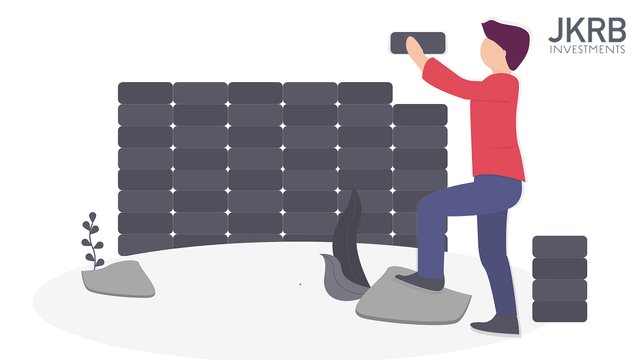How a Decentralised Automated Economy Works

I have coined the acronym DAE — Decentralised Automated Ecomomy — in this article to describe a system that adopts blockchain and smart contract technology, along with automation and AI capable of true non-human work.
Let me explain the idea further, then dive into an example of a robotic system that collects water for a local economy in a decentralised manor, whereby no one would own the robot, and Cryptocurrency would be the means of payment for the robot to continue its work — a decentralised pay as you go model if you like.
Electronics for everyone
With the rise of the Arduino platform and its economy of low cost electronics, anyone can now endevour into creating automated solutions for every day tasks at low barrier to entry.
The quality of these electronics is high and reliable; prototypes can be just as reliable as a mass produced product. If you or your team can fulfil your market’s demands, you could indeed sell your Arduino derived units to your intended audience.
The Raspberry Pi ecosystem, open source AI software and 3D printing have been catalysts to the rapidly growing community around AI software and development.
Why? Because anyone with an internet connection can purchase these cheap electronics and study the software. Anyone can become an AI developer.
Indeed, AI and robotic automation is nothing new to large corporations. In eCommerce for example, Amazon’s or Alibiba’s fulfilment warehouses are operated by rovers that autonomously deliver products to the packer. Just like runways are automatically assigned to aircraft, shelves are picked up and assigned to an allotted space, and then taken to the human packer when an order is due.
This is great, but Amazon’s fulfilment fees are not cheap (relatively speaking). One would argue that a high level of automation could lower costings and consequently lower end-user fulfilment fees. We have not seen this; but it no longer matters — we will be seeing these kinds of systems come into the home, office or warehouse to anyone who desires such a system in the near future.
Automated rovers are commonly used as a means of studying robotics. Equipped with object detection sensors and a pathfinding algorithm, rovers can get from point A to B without a single neural network.
The blockchain element
At JKRB we believe that the blockchain will play a huge role in a world where machines will carry out labour intensive tasks.
Let’s take a smart contract capable blockchain, the EVM (Ethereum’s blockchain, the Ethereum Virtual Machine), and create a smart contract capable of managing payments to a physical machine, prompting it to continue its work
Imagine a scenario where we can send Cryptocurrency to our autonomous rover. In turn, the rover will carry out its task that we have programmed it to do.
The amount of work the rover undertakes is dependent on the amount of Cryptocurrency we pay the rover.
Our rover is assigned to drive to a nearby water reserve, collect some water, and then drive it back to a nearby town.
Amongst the poorest communities on the planet, the task of collecting water not only is time consuming, it drains considerable energy from those undertaking the task.
Locking humans out of the machine
To make the rover truly decentralised, we need to lock ourselves out of the system. Change the root password to a programattic random string, make our private key inaccessible and non-readable, etc. Removing the possibility of a human fiddling with the internal software is a necessity.
The smart contract handles the rovers economy, and our automation software handles its job.
Now, some interesting economics surface from this model:
Our Cryptocurrency value is not fixed. In a poorer community, 0.0000001 of our token could pay for 10 hours of rover labour, for example, ensuring any community can fund the system.
It is in the interst of the entire community for the rover to run smoothly. Therefore it is unlikely the rover will be tampered with or intentionally damaged. It is also incentivising for the community to study various maintenance techniques to keep the rover running optimally.
Power management can be operated automatically. When the rover battery is low, it could drive to a charging station, powered by renewable energy.
When the rover needs maintenance, the additional value created by the community within the time & energy saved from the long walk to collect water would be more than enough to pay maintenance costs.
Non-profits or community groups could donate to the rover at any time, as it would have a network card installed allowing it access to the blockchain.
This is only one rover performing one task. If we multiply our tasks and time savings, such an approach can dramatically improve a community’s standard of living.
DAEs could be a great priviledge for a society.
Do you like the idea of autonomous systems? Visit the Arduino Project Hub to get some inspiration.
Try creating a system for yourself around your home, whether it may be mowing lawn, vacuuming, watering plants, or washing windows.
As these jobs compound free time — how will you utilise it?